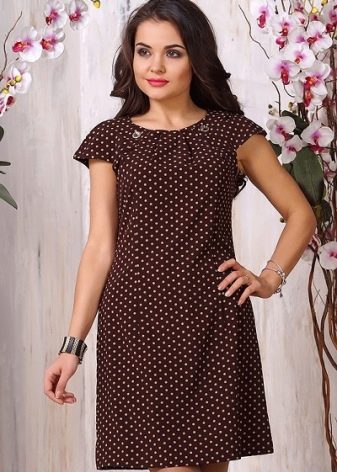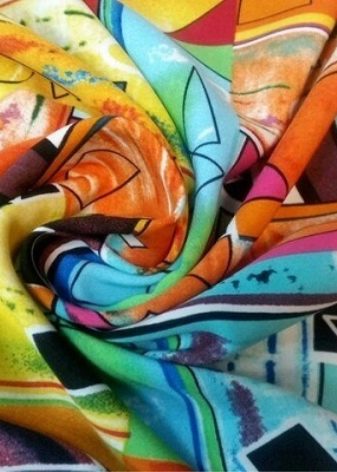Features of niagara fabric

The fabric with the unusual name Niagara has become widespread. In our review, we will tell you in detail about all the features of this canvas, consider the scope of its application, and give recommendations on the care of the material.


Description
The name of the fabric corresponds to the name of the most famous American waterfall, Niagara. And this is no coincidence, since in its appearance this canvas strongly resembles a powerful stream of water. This material is easily draped, it flows and shimmers. Its delicate smooth texture is comfortable for the body, and from the outside it looks invariably refined and elegant. Niagara is a thin and light fabric, completely opaque. At the same time, clues on it are unlikely, and besides, the matter does not crumple.
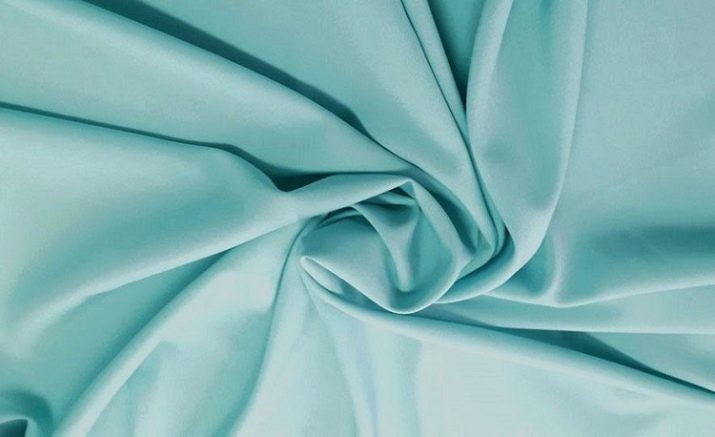
In terms of its visual characteristics, Niagara resembles silk; clothes made from it look expensive and stylish. Things made from such fabric allow the skin to breathe, they do not constrain movement and do not cause allergic reactions. Niagara belongs to the category of dress and blouse fabrics. Most often, its composition is 100% synthetic, including 97% polyester and 3% spandex. Less often, artificial viscose fibers are added to the canvas, their share can reach 35%.
Weaving is simple - the warp and weft threads are tightly intertwined in the plain type with a density ranging from 110 to 130 g / m2.

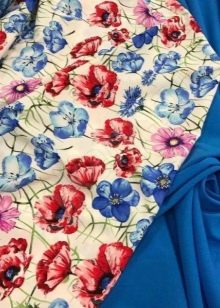

Among the main characteristics of this fabric are the following:
- smooth matte surface;
- sliding during sewing;
- shrinkage in length when washing;
- due to tight weaving, the threads do not disperse at the seams;
- the cut of the fabric does not crumble, therefore it does not require special processing;
- under the influence of hot air amenable to molding.
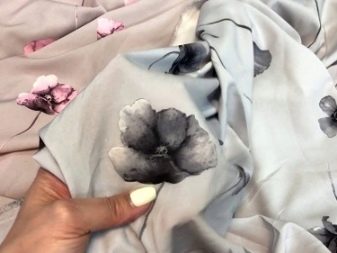
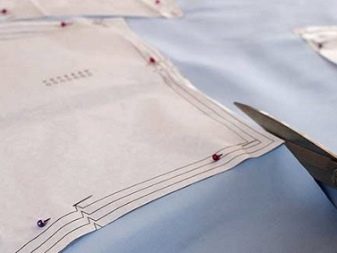
Origin
The main country-manufacturer of niagara fabric is China; other countries - Thailand and South Korea - are also engaged in the production of this fabric in smaller volumes. It is supplied to our country as an import.
Niagara fabric is relatively young, it appeared at the end of the 20th century and was the result of the widespread adoption of polyester production technology. The output is material, the front side of which is fleecy, and the wrong side is perfectly smooth. Niagara fabric is intended for the manufacture of thin suits, dresses and sleepwear, made in accordance with the current GOST 21790-2005. This standard regulates the use of fabric when sewing models of suit and dress assortment and items of clothing.
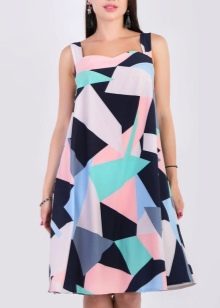

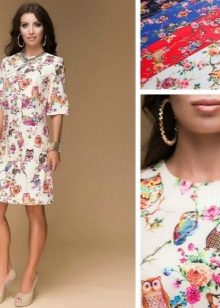
Features of production
Niagara is a thin and very light fabric. The raw materials for the production are synthetic fibers of the highest quality, therefore, products made from such fabric are distinguished by exceptional durability, environmental safety, hypoallergenicity and wearing comfort. For the manufacture of fabric, they take polyester and spandex fibers, plain weaving of threads ensures its elasticity and tensile strength. The resulting fabric is dyed with persistent safe dyes, and then dried.
Niagara is considered an innovative type of fabric. This synthetic fabric has taken on the very best characteristics of natural silk. But in comparison with the latter, it has increased wear resistance. And the affordable price of the synthetic analogue becomes a pleasant bonus.


Advantages and disadvantages
The list of benefits of niagara fabric is extensive.
- High tensile and shear strength. This is due to the structure of the tissue. Niagara consists mainly of strong synthetic fibers, due to their plain weave, the material at the exit acquires increased strength characteristics. If viscose is added to the composition, then the strength decreases.
- Elasticity. Spandex fibers in Niagara are found in both warp and weft. Thanks to this, the fabric becomes elastic and acquires a light stretch effect.
- Crease resistance. Due to the synthetic fiber structure, the material does not wrinkle. However, if viscose is introduced into the composition, then the wrinkle increases.
- Draping. Lightweight thin fabric can form even the thinnest and most graceful folds.
- Resistant to wear and tear. Due to the dominant polyester fibers in the fabric, its wear resistance is extremely high. Even with the addition of viscose, this parameter changes slightly.
- Reduced hygroscopicity. Synthetic fibers prevent the absorption of water vapor from the external environment. This does not apply to niagara with viscose, such a matter, on the contrary, has increased hygroscopicity.
- Low dust permeability. Due to the smooth surface and dense structure of the fibers, the fabric does not allow dust particles to pass through, thereby maintaining optimal hygiene.

There are also disadvantages.
- Water permeability. Niagara has a dense weave of fibers. But at the same time, the fabric is smooth and thin, so water droplets on its surface do not linger for a long time and begin to be absorbed.
- Medium breathability. Due to the thickness, air and steam can easily penetrate through the canvas. However, the rate of air exchange is still lower than when using natural linens.
- Reduced heat capacity. The heat-shielding characteristics of Niagara are low, since it is a very thin fabric.
- Electrification. Niagara has the property of accumulating static electricity, so when wearing clothes made of this fabric, you must use an antistatic agent.
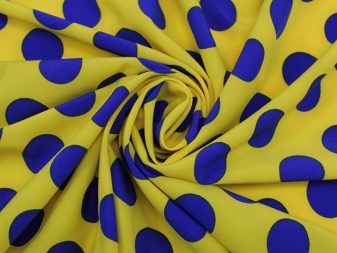

Applications
In terms of its physical and mechanical characteristics, Niagara meets all the requirements for fabrics for the manufacture of women's clothing.It favorably emphasizes the figure, flows and easily drapes - thanks to these properties, the dress material is highly valued by the fair sex. In this regard, the basic scopes of fabrics are:
- dresses - both office casual and stylish evening dresses:
- skirts - mini and maxi;
- tunics;
- blouses;
- tops;
- overalls;
- sundresses;
- bathrobes;
- pajamas;
- night shirts.
Some varieties of niagara are used for sewing tablecloths, sofa covers and decorative pillowcases. In addition, the fabric has become widespread as a canvas for the manufacture of curtains, curtains and vertical blinds.
Curtains made of this fabric will look harmonious in any room, regardless of its functionality, be it a nursery, a bedroom or a living room.
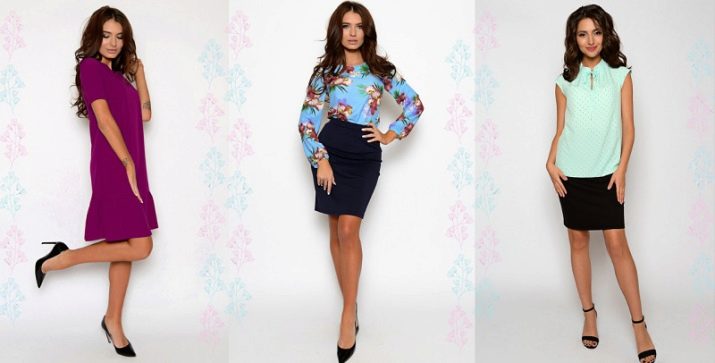
Care rules
Niagara fabric is very fond of dressmakers. This is not surprising, because it does not crumble, and the line lies smoothly and neatly. However, given some features of the fabric, experienced craftswomen try to adhere to the basic rules when working with it.
- Niagara slips and stretches slightly, so the pattern should be firmly fixed to its surface.
- For work, you need to take knitwear and stretch needles.
- Stitching parts together is best done with an elastic thread.
- Before starting work, it will not be superfluous to test the seam on a small piece of fabric - this will help you understand how the fabric will behave at a certain thread tension mode.
- Niagara with viscose after the first wash shrinks by 5-7%, therefore, before cutting, it is imperative to wash the used section in water with washing powder.
There are also recommendations regarding the care of the canvas.

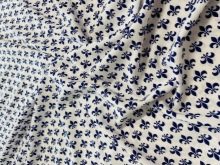
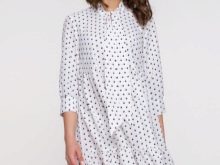
Washing
When washing niagara of all types, it is necessary to proceed from the following requirements:
- optimal temperature regime - 30 degrees;
- any universal detergents are suitable;
- drying is carried out in a straightened form in a natural way, away from batteries, fireplaces and other heating appliances;
- it is advisable to wash niagara with your hands without squeezing and twisting; when using an automatic machine, set a delicate mode without spinning.


Ironing
Niagara cloth does not need to be ironed - it straightens itself on the body. If the fabric contains viscose and is strongly wrinkled, then set the “silk” mode when ironing. Things are ironed from the wrong side at a temperature not higher than 130 degrees, if necessary, steaming is allowed.
Special attention should be paid to storage. Niagara products can be stored either on a hanger or folded on a shelf. It is better to cover dresses and skirts with a cover for clothes so that things do not get dusty. In this case, the wardrobe must be dry, protected from direct ultraviolet rays and regularly ventilated.
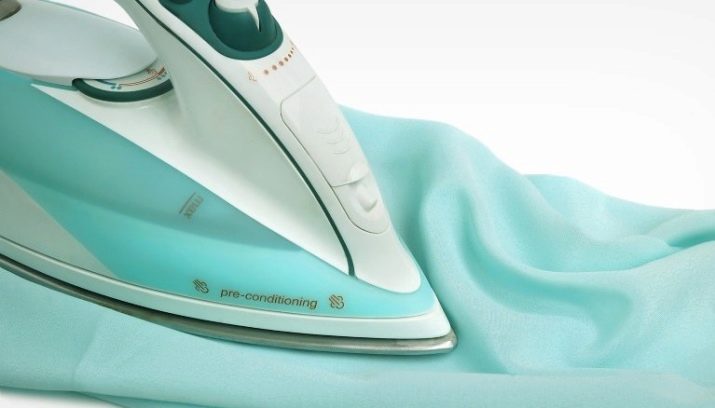
Review overview
Niagara is a popular fabric that is loved by many. Tailors appreciate it for its ease of sewing; owners of things made from this fabric are attracted by the ease of care and the absence of the need for complex ironing. Fashionistas highlight a variety of colors and textures, children like it for its ease and comfort to wear. The cost of products that belong to the middle price range is also perceived positively.
The availability of the canvas is explained by the reduced cost of the raw materials used and the lack of a brand position. It is no secret that for the mark of brands you often have to pay quite noun sums. Niagara products will serve their owners for a long time. The main thing is to properly care for things, and follow the recommendations indicated on the label.
However, in fairness, it should be noted that they do not require much trouble.
